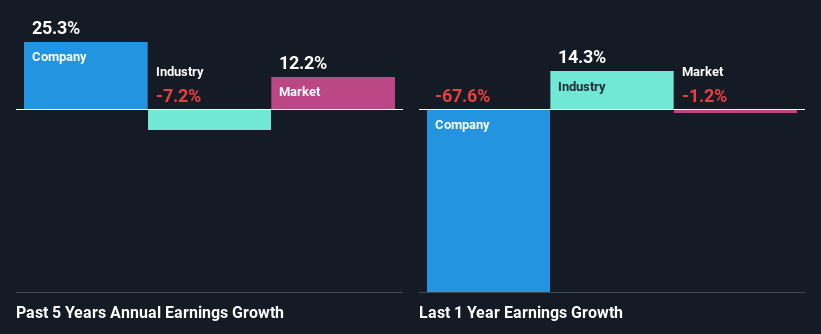Most readers would already know that Beazley’s (LON:BEZ) stock increased by 3.3% over the past month. As most would know, long-term fundamentals have a strong correlation with market price movements, so we decided to look at the company’s key financial indicators today to determine if they have any role to play in the recent price movement. In this article, we decided to focus on Beazley’s ROE.
ROE or return on equity is a useful tool to assess how effectively a company can generate returns on the investment it received from its shareholders. In other words, it is a profitability ratio which measures the rate of return on the capital provided by the company’s shareholders.
Check out our latest analysis for Beazley
How To Calculate Return On Equity?
The formula for return on equity is:
Return on Equity = Net Profit (from continuing operations) ÷ Shareholders’ Equity
So, based on the above formula, the ROE for Beazley is:
4.8% = US$150m ÷ US$3.1b (Based on the trailing twelve months to June 2023).
The ‘return’ is the income the business earned over the last year. One way to conceptualize this is that for each £1 of shareholders’ capital it has, the company made £0.05 in profit.
Why Is ROE Important For Earnings Growth?
So far, we’ve learned that ROE is a measure of a company’s profitability. Based on how much of its profits the company chooses to reinvest or “retain”, we are then able to evaluate a company’s future ability to generate profits. Generally speaking, other things being equal, firms with a high return on equity and profit retention, have a higher growth rate than firms that don’t share these attributes.
Beazley’s Earnings Growth And 4.8% ROE
At first glance, Beazley’s ROE doesn’t look very promising. Next, when compared to the average industry ROE of 8.5%, the company’s ROE leaves us feeling even less enthusiastic. In spite of this, Beazley was able to grow its net income considerably, at a rate of 25% in the last five years. We reckon that there could be other factors at play here. For instance, the company has a low payout ratio or is being managed efficiently.
When you consider the fact that the industry earnings have shrunk at a rate of 7.2% in the same 5-year period, the company’s net income growth is pretty remarkable.

The basis for attaching value to a company is, to a great extent, tied to its earnings growth. It’s important for an investor to know whether the market has priced in the company’s expected earnings growth (or decline). By doing so, they will have an idea if the stock is headed into clear blue waters or if swampy waters await. If you’re wondering about Beazley’s’s valuation, check out this gauge of its price-to-earnings ratio, as compared to its industry.
Is Beazley Using Its Retained Earnings Effectively?
Beazley has a significant three-year median payout ratio of 62%, meaning the company only retains 38% of its income. This implies that the company has been able to achieve high earnings growth despite returning most of its profits to shareholders.
Besides, Beazley has been paying dividends for at least ten years or more. This shows that the company is committed to sharing profits with its shareholders. Upon studying the latest analysts’ consensus data, we found that the company’s future payout ratio is expected to drop to 19% over the next three years. As a result, the expected drop in Beazley’s payout ratio explains the anticipated rise in the company’s future ROE to 20%, over the same period.
Conclusion
Overall, we feel that Beazley certainly does have some positive factors to consider. While no doubt its earnings growth is pretty substantial, we do feel that the reinvestment rate is pretty low, meaning, the earnings growth number could have been significantly higher had the company been retaining more of its profits. On studying current analyst estimates, we found that analysts expect the company to continue its recent growth streak. Are these analysts expectations based on the broad expectations for the industry, or on the company’s fundamentals? Click here to be taken to our analyst’s forecasts page for the company.
Valuation is complex, but we’re helping make it simple.
Find out whether Beazley is potentially over or undervalued by checking out our comprehensive analysis, which includes fair value estimates, risks and warnings, dividends, insider transactions and financial health.
Have feedback on this article? Concerned about the content? Get in touch with us directly. Alternatively, email editorial-team (at) simplywallst.com.
This article by Simply Wall St is general in nature. We provide commentary based on historical data and analyst forecasts only using an unbiased methodology and our articles are not intended to be financial advice. It does not constitute a recommendation to buy or sell any stock, and does not take account of your objectives, or your financial situation. We aim to bring you long-term focused analysis driven by fundamental data. Note that our analysis may not factor in the latest price-sensitive company announcements or qualitative material. Simply Wall St has no position in any stocks mentioned.
















